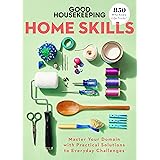Building High-End DIY Kitchen Cabinets: A Detailed Cost Breakdown and Strategic Guide
Building custom kitchen cabinets yourself can lead to significant savings while still achieving a high-end, personalized look. As shown in the accompanying video, one homeowner managed to construct her dream kitchen cabinetry for a mere fraction of the cost of professional custom work, totaling just $5,453. This impressive feat demonstrates that meticulous planning and DIY prowess can yield a truly unique and functional kitchen without the exorbitant price tag typically associated with bespoke designs.The allure of custom cabinetry lies in its ability to perfectly fit a space, maximize storage, and incorporate specific aesthetic preferences. However, traditional custom installations from professionals often range between $15,000 and $30,000, sometimes even more. For many homeowners, this price point makes high-end features feel out of reach, sparking a desire for alternative solutions. This is precisely where the DIY approach shines, empowering individuals to bring their vision to life.
1. The Vision Behind Custom DIY Kitchen Cabinets
The primary motivation for embarking on a DIY kitchen cabinet project often stems from a desire for specific features not found in off-the-shelf options. This includes built-in storage solutions, unique dimensions, or particular design elements like shaker doors or specialized finishes. Achieving this level of customization through professional services can quickly escalate costs, making a DIY approach an attractive alternative for budget-conscious homeowners.
Opting to build your own cabinets also allows for an unparalleled level of quality control over materials and construction. You can select premium plywood for durability, choose specific wood species for face frames and doors, and ensure every joint is robust. This hands-on involvement not only guarantees a sturdy final product but also instills a deep sense of pride in your home improvement efforts.
2. Breaking Down the Core Cabinet Structure Costs
The foundation of any robust kitchen cabinet system begins with high-quality materials for the bases and frames. Understanding where your budget is allocated is crucial for effective planning and cost management.
Plywood for Cabinet Bases: The Unseen Foundation
The homeowner in the video spent $1,370 on plywood for the cabinet bases, which form the structural boxes of the cabinets. For internal structures that won’t be visible, a good quality sanded plywood like ACX or BCX can be a cost-effective choice. However, for a truly high-end feel and enhanced durability, many DIYers opt for higher-grade options like Baltic birch or cabinet-grade plywood, which offer superior stability and a smoother finish. While more expensive, these choices contribute significantly to the longevity and structural integrity of your custom kitchen cabinets.
Lumber for Face Frames, Doors, and the Island: Defining the Aesthetic
A significant portion of the cabinet’s aesthetic appeal comes from its visible wood components. The video highlights an expense of $780 for lumber used for cabinet face frames, shaker doors, and nickel gap shiplap for the island. Poplar is an excellent choice for painted cabinetry because of its smooth grain and affordability compared to hardwoods like maple or cherry. It takes paint exceptionally well, creating a flawless finish.
Shaker doors, characterized by their five-piece construction with a flat recessed panel, remain a timeless and popular choice due to their clean lines and versatility. Nickel gap shiplap adds a touch of rustic elegance and texture, particularly effective on an island where it can become a focal point. When sourcing lumber, comparing prices from local lumberyards versus big box stores can often yield significant savings, with local suppliers sometimes offering better quality and variety.
3. Elevating Storage with Drawers and Pull-Outs
One hallmark of high-end kitchen design is the prevalence of drawers and pull-outs over traditional fixed shelving. These features greatly enhance accessibility and organization, transforming chaotic cabinets into highly functional storage spaces. The video outlines a cost of $1,410 for these premium elements, showcasing how strategic splurges can truly elevate a kitchen.
Walnut Plywood, Dovetail Joinery, and Solid Walnut Fronts: A Touch of Luxury
To make the pull-outs “even more extra,” the homeowner opted for walnut plywood with dovetail joinery and solid walnut fronts. Dovetail joinery is a classic woodworking technique known for its strength and aesthetic appeal, often associated with fine furniture. It signifies superior craftsmanship and durability, particularly important for frequently used drawers that bear weight. Walnut plywood offers a beautiful, rich grain for drawer boxes, while solid walnut fronts add a luxurious, furniture-grade finish that instantly communicates quality. While this choice significantly impacts the cost, it’s a prime example of investing in visible details that contribute to the overall “high-end” feel.
Additionally, edge banding and sealant were included in this cost. Edge banding is crucial for covering the exposed plywood edges, creating a clean, finished look, especially on interior components like drawer boxes. Sealant protects the wood, making it resistant to moisture and wear, essential for longevity in a busy kitchen environment.
4. The Hardware That Makes a Difference
While often overlooked, the quality of cabinet hardware plays a pivotal role in both the functionality and user experience of your kitchen. Investing in good hardware ensures smooth operation and durability for years to come.
Undermount Drawer Slides: The Hidden Advantage
A key detail in custom cabinetry is the invisible hardware, such as undermount drawer slides. These slides, costing $598 in the video, attach to the underside of the drawer box, allowing the drawer to float seamlessly and providing full extension while remaining completely hidden when the drawer is closed. They often feature soft-close mechanisms, preventing slamming and adding a touch of luxury. Compared to side-mount slides, undermount options are typically more expensive but offer a cleaner aesthetic and a smoother, more stable glide, confirming their status as a high-end choice.
Hinges and Screws: Essential Components
The smaller, yet crucial, components included door hinges ($45) and screws ($89). High-quality soft-close hinges are a must for cabinet doors, ensuring quiet operation and preventing wear and tear. Similarly, using appropriate screws for cabinet construction guarantees structural integrity. Skimping on these foundational elements can compromise the overall durability and functionality of your custom kitchen cabinets, making them a worthwhile investment.
5. The Finishing Touches and Strategic Splurges
The final appearance and specialized functionality of your kitchen cabinets are determined by the finishing process and any integrated organizers or appliances. These elements are where personal style truly comes to life.
Primer and High-End Cabinet Paint: The Lasting Impression
Achieving a durable, professional-looking finish requires proper preparation and quality paint. The homeowner spent $436 on primer and high-end cabinet paint. Primer is essential for proper paint adhesion and creating a uniform surface, especially when painting over different types of wood or previously finished surfaces. High-end cabinet paints are formulated for superior durability, chip resistance, and a smooth, even finish, crucial for a high-traffic area like the kitchen. While the video mentions a repaint to achieve a “more purple” hue, which added to the cost, this highlights the flexibility of DIY projects—you can always change your mind, even if it adds to the budget.
Fancy Inserts: Maximizing Space and Convenience
One of the greatest benefits of custom cabinetry is the ability to integrate specialized storage solutions that optimize every inch of space. The video showcases two such inserts: a blind corner sliding organizer for $564 and a stand mixer lift for $161. A blind corner organizer transforms an otherwise inaccessible cabinet corner into usable, easily retrievable storage. A stand mixer lift provides a convenient, ergonomic way to store and use heavy kitchen appliances, lifting them to countertop height when needed and tucking them away when not. These specialized inserts, though an additional expense, significantly enhance the functionality and luxury feel of the kitchen, proving invaluable in daily use.
6. The Ultimate Cost Comparison: DIY vs. Professional Custom Cabinets
Ultimately, the total cost for these custom DIY kitchen cabinets came to $5,453. This figure, while not insignificant, pales in comparison to the professional cost for similar high-end custom cabinetry, which typically runs anywhere from $15,000 to $30,000. This represents a potential savings of $9,547 to $24,547, making the DIY route an incredibly attractive financial proposition.
Consider that according to a 2023 Houzz report, a major kitchen remodel in the U.S. can average around $40,000, with minor remodels costing approximately $25,000. Cabinetry alone often accounts for 30-40% of a kitchen renovation budget. By tackling the custom kitchen cabinets yourself, you are directly impacting one of the largest expenditure categories, freeing up significant funds that can be allocated to other aspects of the renovation or simply saved. This stark comparison underscores the immense value and satisfaction derived from building your own **DIY kitchen cabinets** to create a custom, high-end kitchen on a realistic budget.







